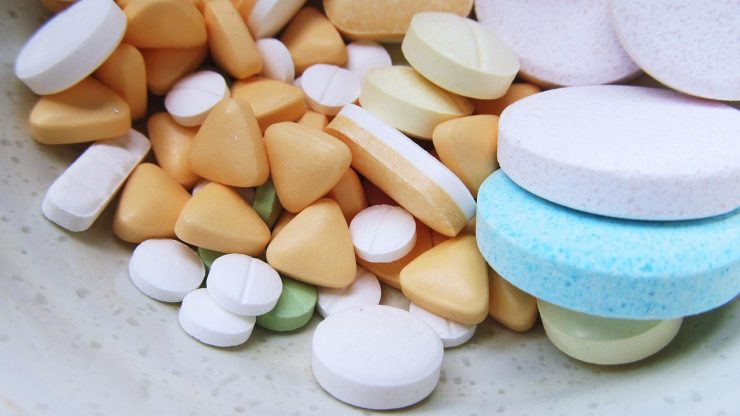Let’s talk about iron for a minute. You’ve probably heard it’s important—and it is. Iron plays a major role in your overall health. It helps your body produce hemoglobin, the protein in red blood cells that carries oxygen from your lungs to the rest of your body. Without enough of it, your cells, brain, and muscles don’t get the oxygen they need—and that leads to fatigue, weakness, and a whole host of other symptoms.
Iron also supports your metabolism, keeps your hormones in balance, helps with mood and mental clarity, and is essential for healthy growth, neurological development, and cellular function.
What Happens When You Don’t Get Enough?
When your iron stores are low, everything starts to slow down. You might feel worn out, mentally foggy, cold all the time, or short of breath. Severe iron deficiency can lead to anemia, which comes with symptoms like:
-
Chronic fatigue
-
Dizziness
-
Cold hands and feet
-
Shortness of breath
-
Sore tongue
-
Brittle nails
-
Pica (cravings for non-food items)
-
Poor appetite
According to the CDC, about 10% of women in the U.S. are iron deficient, and globally, up to 80% of people may be falling short. Around 25% actually have full-blown iron-deficiency anemia.
Where Do We Get Iron?
Iron comes from two main sources:
-
Heme iron – found in meat, poultry, and seafood
-
Non-heme iron – found in plant foods like leafy greens, nuts, seeds, whole grains, and legumes
Heme iron is more easily absorbed by your body. Non-heme iron is harder to take in, which is one reason why vegetarians and vegans may need to pay extra attention to their iron intake.
But Here’s the Flip Side: Too Much Iron Is Dangerous
We talk a lot about iron deficiency—but iron overload can be just as dangerous, if not more.
Overdosing on iron supplements can cause serious health issues and even be life-threatening. In fact, iron pills are one of the most dangerous items you could have in your medicine cabinet—especially around children or elderly individuals. Just one large dose can cause poisoning.
Even smaller daily doses over time (especially if you’re taking more than 45 mg/day) can cause issues like nausea, cramps, vomiting, constipation—and in extreme cases, liver damage, heart problems, and death.
There are two main ways people end up with too much iron:
-
Overuse of supplements
-
Hemochromatosis, a genetic condition that causes the body to absorb too much iron from food
When that excess iron builds up, it doesn’t just hang out harmlessly—it stores in organs like your heart, liver, pancreas, joints, and even your brain, causing long-term damage. This can lead to conditions like:
-
Heart disease
-
Cirrhosis
-
Arthritis
-
Diabetes
-
Depression
-
Premature aging
-
Even cancer
What is Hemochromatosis?
Hemochromatosis is a genetic disorder that messes with your body’s iron regulation. Your body just keeps absorbing iron—and unfortunately, it doesn’t have an easy way to get rid of the extra unless you’re regularly donating blood or still menstruating.
This condition often goes undiagnosed. People with it may be misdiagnosed with things like arthritis, liver issues, diabetes, or fatigue—when the root cause is iron overload.
It tends to show up more in older men and postmenopausal women, especially those with Northern European heritage (Irish, Scottish, English). And if you have a family member with hemochromatosis, your risk is even higher.
Symptoms can include:
-
Chronic fatigue
-
Joint pain
-
Loss of sex drive
-
Abdominal pain
-
Depression
-
Skin discoloration (yellowish or grayish tone)
Blood tests can help detect it—especially tests that look at ferritin, transferrin saturation, and total iron binding capacity. Anyone over 40 should get screened, especially if they’re in a higher-risk group.
How Is Iron Overload Treated?
Treatment usually involves one of two options:
-
Therapeutic phlebotomy (yes, literally removing blood on a regular basis)
-
Chelation therapy, which uses medication to bind and remove excess iron
What About Iron from Food?
Iron-rich foods (especially from natural sources like red meat or leafy greens) are generally safe—your body can usually regulate how much it absorbs from food. The real risk comes from supplements, especially if you’re not deficient.
And yes—iron supplements can interact with certain medications like:
-
Parkinson’s meds (Levodopa/Carbidopa)
-
Thyroid meds (Levothyroxine)
-
Antibiotics (Tetracycline, Penicillin, Ciprofloxacin)
-
Proton pump inhibitors (for acid reflux)
Iron and Cancer
Research shows that excess iron—particularly heme iron from red meat or supplements—may increase cancer risk, especially colon cancer. Some studies have linked it to the formation of N-nitroso compounds, which are potentially carcinogenic. More research is needed, but it’s worth noting if you eat a lot of red meat or take iron supplements.
Tips for Managing Iron Levels
If you’re concerned about iron overload, especially as you age, there are a few simple things you can do:
-
Eat antioxidant-rich foods – Colorful fruits and vegetables can help neutralize free radicals caused by excess iron
-
Drink tea or coffee with meals – They block some iron absorption
-
Have calcium with meals – Dairy, or a supplement, can reduce iron uptake
-
Avoid combining red meat with iron-fortified foods – It can amplify absorption
-
Choose red wine over hard liquor – Wine contains polyphenols that reduce iron absorption
-
Drink mineral water – It can blunt the effects of heme iron and reduce inflammation
-
Exercise regularly – Physical activity helps regulate iron and improve metabolism
-
Live at higher altitudes if possible – Your body will use up more iron to compensate for lower oxygen
Bottom Line
Iron is essential—but like a lot of things, too much can cause harm. It’s all about balance.
If you’re postmenopausal, over 40, or have Northern European ancestry—or especially if someone in your family has hemochromatosis—ask your doctor about getting your iron levels checked. And skip the supplements unless you know for sure you’re low.
A little awareness can go a long way toward protecting your long-term health.











